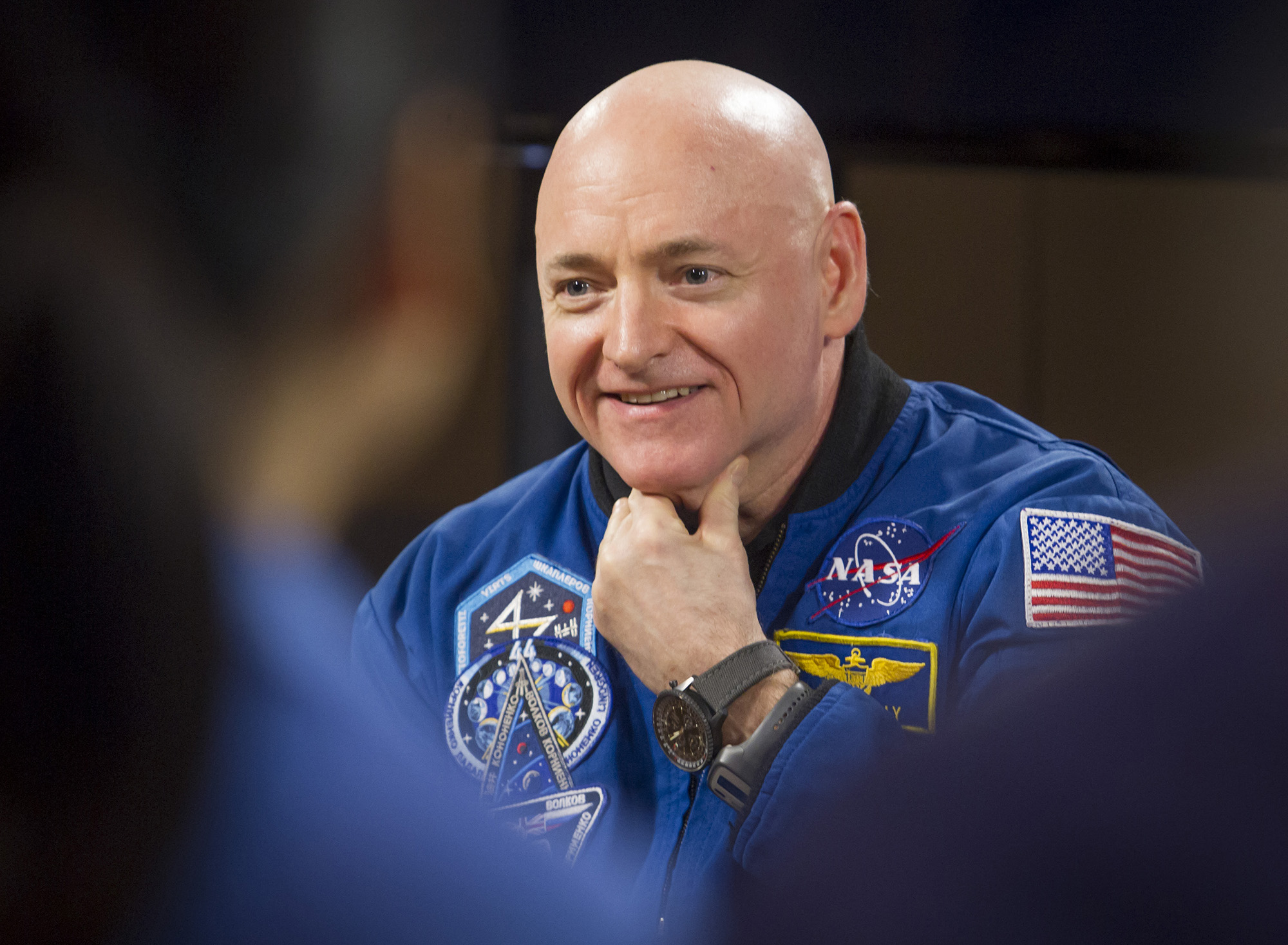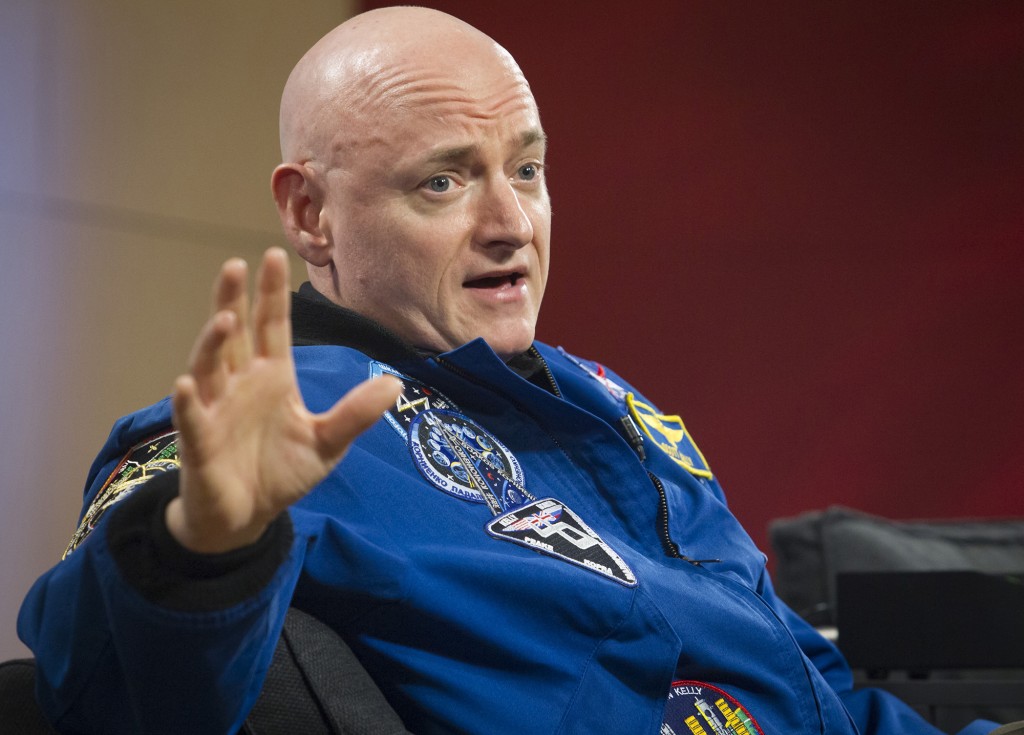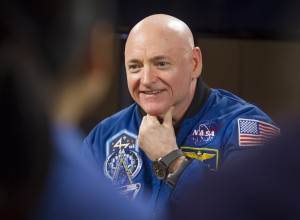
Astronaut Scott Kelly back on Earth after ‘year’ in space

March 1, NASA astronaut Scott Kelly landed in the Kazakshstan desert, along with cosmonauts Mikhail Kornienko and Sergey Volkov, after spending 340 days in space as the commander of the International Space Station (ISS).
On this mission, Kelly, a veteran astronaut, orbited the Earth over 5,440 times and is still trying to adjust to being back home — soreness and all.
During a March 4 news conference about his return to Earth after completing his fourth space mission, Kelly talked about his experiences aboard the ISS, how his body was adjusting to being back on Earth, family and his feelings and thoughts on how he will always be connected to the space program.
“This go round, my level of muscle soreness and fatigue is a lot higher than it was last time,” Kelly said. “And because I haven’t touched anything in so long, my skin is also very sensitive. It’s almost like a burning feeling whenever I sit, lie down or walk.”
After undergoing a series of routine psychological and physical tests by doctors — and several weather delays — Kelly arrived back in Houston around 4 a.m. March 3. Kelly’s family greeted him enthusiastically, including his twin brother Mark, who is a retired astronaut and the husband of former Arizona congresswoman Gabrielle Giffords.
The Kelly twins were a part of NASA’s and the National Space Biomedical Research Institute’s (NSBRI) jointly supported Twins Study. The study includes a series of ten separate investigations to collect data that will provide a broader insight into the subtle effects and changes that may occur in spaceflight as compared to Earth by studying two individuals who have the same genetics — but are in different environments for one year.
“The Twins Study is the most ambitious, integrated omics study likely ever performed on a single pair of twins,” said Graham Scott, vice president, chief scientist and institute associate director at NSBRI. “We are comparing the two twin brothers to each other (as they are essentially genetically identical) — but also to themselves, because we can look at the data before, during and after the one-year ISS mission, (i.e., this is a longitudinal study).”
The “almost” yearlong mission aboard the ISS was designed to study how the human body reacts to long-term space flight. The information collected will be used to prepare future astronauts for missions like a flight to Mars. NASA and NSBRI will spend years analyzing the information collected, so it may not be available for more than a year, possibly more.
“Data and biofluids will continue to be collected on both twin brothers for approximately another nine months,” Graham Scott said. “Analysis of the data and biofluids will likely be available via publishing the results in the scientific literature, sometime in 2017.”
Kelly, 52, currently holds the record for the longest amount of time spent in space by an American, which is 520 days. In the upcoming year, Kelly will undergo a series of tests and physical exams.
“I could have gone longer on this flight if there was good reason,” Kelly said. “I think going to Mars —even if it takes two years — is doable. However, the hardest part is being isolated from people on the ground who are important to you.”
Scientists are hoping for more one-year subjects as NASA gears up for human expeditions to Mars in the 2030s. Radiation will be a top challenge, along with the body and mind’s durability on what will be a 2 ½-year journey round trip.

“The Twins Study is a precursor to eventually deploying personalized space medicine,” Scott said. “That will allow humans to lower the onerous health risks of getting to the red planet, hopefully within the next two decades, and certainly within our lifetimes.”
Alluding to this being his last space mission and not wanting to leave out the possibility of returning to space, Kelly said that he would certainly entertain the thought of returning to space as a passenger on a commercial spacecraft.
“It’s just an unbelievable feeling to be back here on planet Earth, back in our great country and back with all my family and friends,” Kelly said. “I’ll never be done with space. I’ll always be involved — one way or another.”
JSC History Collection at UHCL
The Johnson Space Center, a branch of NASA, also has a strong relationship with the University of Houston-Clear Lake. The UHCL Archives/JSC relationship was started to provide access to documents related to Apollo, Skylab, Apollo-Soyuz Test Project, Shuttle, Space Station, and general JSC history. Items were compiled and curated by historians working on the history of human space flight.
For information on the JSC History Collection at UHCL, visit jsc.nasa.gov or contact Lauren Meyers, meyersl@uhcl.edu or 281-283-3936.
